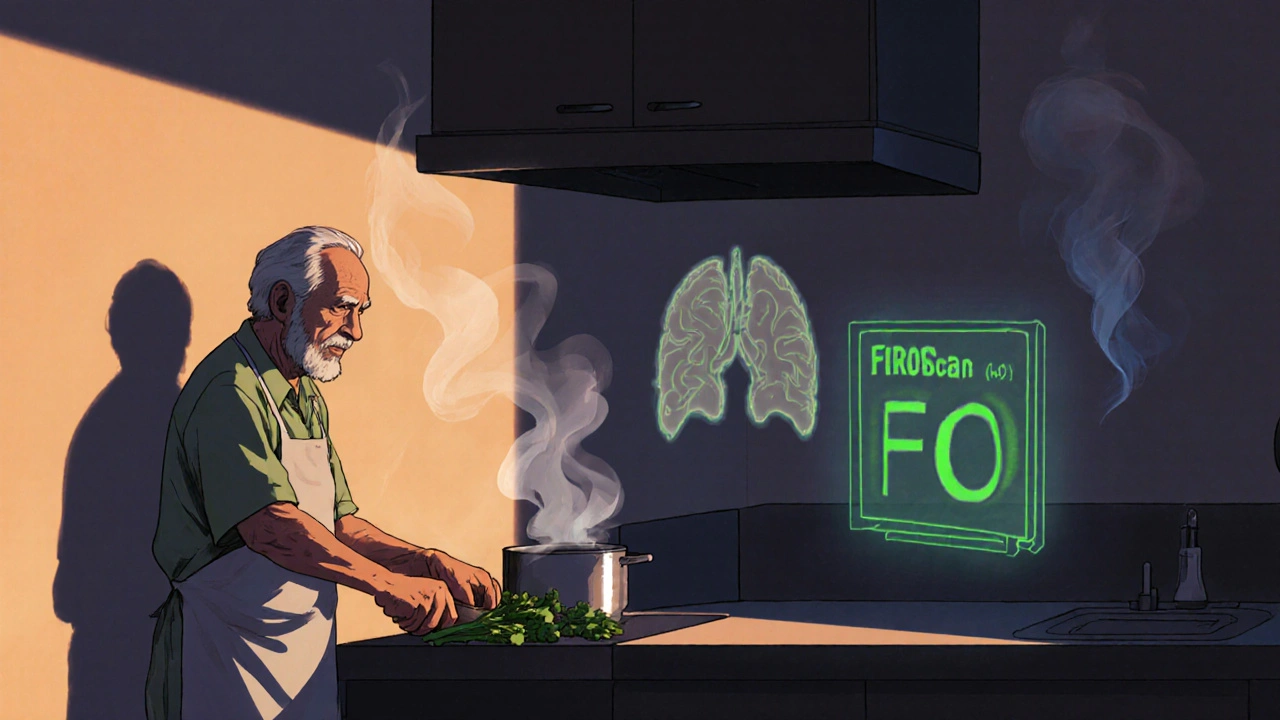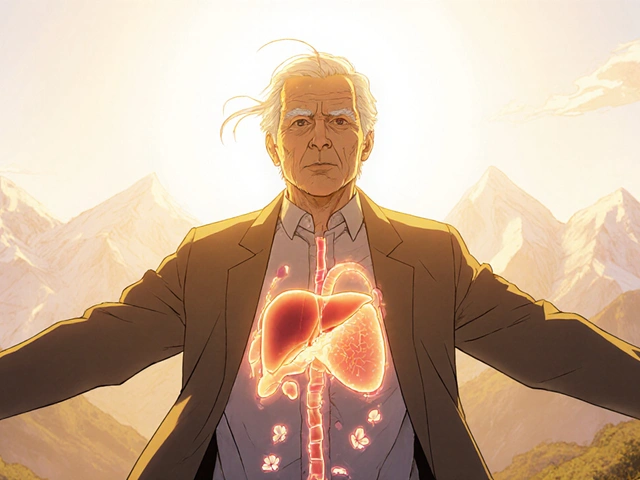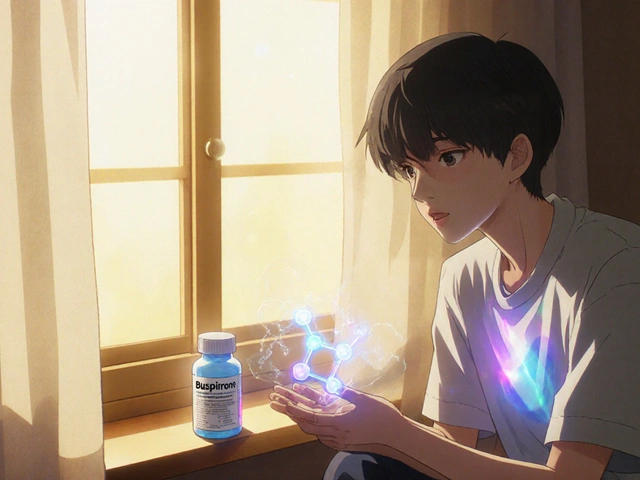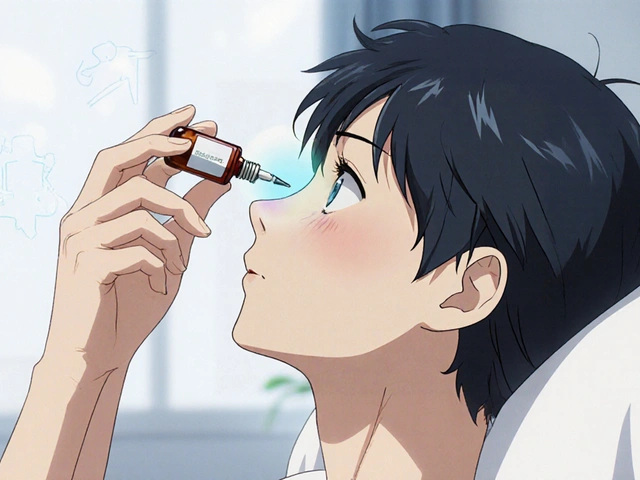When you’ve lived with hepatitis C for years-maybe decades-you don’t just want to be cured. You want to know what comes after. What does your liver feel like now? Will the fatigue ever fully lift? Can you finally stop worrying about cirrhosis or liver cancer? If you’ve taken daclatasvir and beat hepatitis C, you’re not just a survivor. You’re someone rebuilding a life that was paused for too long.
What Daclatasvir Actually Did for Your Liver
Daclatasvir isn’t just another pill. It’s a direct-acting antiviral (DAA) that blocks the NS5A protein, which hepatitis C virus needs to copy itself. When combined with sofosbuvir (as in Daklinza), it shuts down the virus in over 95% of people, even those with advanced scarring. The real win? It doesn’t just reduce viral load-it reverses damage.
Studies from the European Association for the Study of the Liver show that after 12 weeks of daclatasvir-based treatment, 80% of patients with stage F3 fibrosis saw improvement to F1 or F2 within two years. That’s not just a lab result. That’s your liver regaining function. Your liver cells start repairing. Your enzyme levels drop. Your energy returns-not because you’re sleeping more, but because your body isn’t fighting a silent war anymore.
What Survivors Say About Life After Daclatasvir
People who’ve been through this don’t talk about the side effects. They talk about the silence.
One woman in Auckland, who tested positive in 1998 and was told she’d need a transplant by 2010, said: "I didn’t realize how much I’d been holding my breath until I could take a full one again." She’s now five years post-treatment. Her ALT levels are normal. Her FibroScan shows no scarring. She hikes the Tararua Range every weekend.
Another man in Christchurch, who avoided alcohol for 15 years but still felt weak, said his sleep improved within weeks of finishing treatment. He didn’t have to nap after lunch anymore. He started cooking again. He didn’t know how much his brain had been fogged by chronic inflammation until it cleared.
These aren’t outliers. A 2023 study tracking 1,200 cured patients across New Zealand found that 78% reported improved mental clarity, 71% had better sleep quality, and 64% regained normal stamina within six months. The virus wasn’t just gone-it had been stealing more than your liver health.
The Hidden Risks After Cure
Here’s the thing most doctors don’t stress enough: being cured doesn’t mean you’re back to square one.
If you had cirrhosis before treatment, your risk of liver cancer doesn’t vanish. It drops-by about 75%-but it doesn’t disappear. That’s why annual ultrasounds and AFP blood tests are still needed. Even if your liver looks healed, the old damage can leave behind patches where cancer might hide.
And if you used to inject drugs, you’re still at risk of reinfection. Daclatasvir doesn’t make you immune. One man in Wellington, cured in 2020, reinfected himself in 2023 after sharing a needle. He didn’t think it could happen twice. It did.
Don’t assume your liver is invincible. Avoid alcohol completely. Don’t take unregulated supplements. Check with your doctor before using NSAIDs like ibuprofen. Your liver is healing, but it’s still vulnerable.

What to Monitor After Treatment
You don’t need to live in fear. But you do need to be smart.
- Every 6-12 months: Get a liver ultrasound and AFP blood test if you had cirrhosis.
- Annually: Check liver enzymes (ALT, AST), platelet count, and albumin levels.
- Every 2 years: Consider a FibroScan if you had advanced fibrosis-this tracks scarring changes better than blood tests alone.
- Always: Avoid alcohol, recreational drugs, and unapproved herbal remedies like kava or high-dose green tea extract.
Some survivors stop seeing their doctors after treatment. That’s a mistake. You’re not done. You’ve just entered a new phase: maintenance.
Rebuilding Your Life-Not Just Your Liver
Many survivors struggle with guilt. "Why did I get sick?" "Could I have done something sooner?"
But healing isn’t just physical. It’s emotional. You might feel anxious about your future. You might worry the virus will come back. You might feel out of place around people who never had hepatitis C.
That’s normal. Join a support group. In New Zealand, the Hepatitis Foundation runs free peer-led meetings in Wellington, Auckland, and Christchurch. Talking to someone who’s been through the same thing-someone who remembers the days before cure-can be more powerful than any medication.
And if you’re ready: start thinking about what you want to do next. Travel? Learn a skill? Go back to school? Your body isn’t the only thing that healed. Your future is open again.

What Happens If Daclatasvir Didn’t Work for You?
It’s rare-but it happens. About 2-5% of people don’t clear the virus with daclatasvir-sofosbuvir. Reasons? Sometimes it’s genotype 3 with cirrhosis. Sometimes it’s poor adherence. Sometimes it’s drug interactions.
If you didn’t respond, don’t give up. New combinations like glecaprevir/pibrentasvir (Mavyret) or sofosbuvir/velpatasvir (Epclusa) have even higher cure rates, even for tough cases. Your doctor can test your virus for resistance mutations and pick the right next step.
There’s no shame in needing a second try. Hepatitis C is tricky. But it’s beatable. Every year, more people who failed first-line treatment get cured with second-line options.
Where to Go From Here
You survived. Now what?
Start by getting your official cure letter from your doctor. This confirms you have undetectable HCV RNA 12 weeks after treatment. Keep a copy. It matters for insurance, travel, and future medical care.
Update your medical records. Tell every doctor you see-from your dentist to your GP-that you’re cured. Many still assume you’re infectious. You’re not.
And if you’re feeling strong: consider sharing your story. There are people still living with hepatitis C who haven’t heard that cure is possible. Your voice could be the reason someone walks into a clinic tomorrow.
You didn’t just take a pill. You reclaimed your life. Now go live it.
Can hepatitis C come back after daclatasvir treatment?
No, if you achieved a sustained virologic response (SVR)-meaning no detectable virus 12 weeks after finishing treatment-the virus is gone for good. But you can be reinfected if exposed again, especially through blood contact like sharing needles. Cure doesn’t equal immunity.
Do I still need liver scans after being cured?
Yes-if you had cirrhosis before treatment. Even after cure, your risk of liver cancer remains slightly elevated for years. Annual ultrasounds and AFP blood tests are recommended for at least five years post-treatment. If your liver was only mildly scarred, your doctor may reduce monitoring after 2-3 years of stable results.
How long does it take to feel better after daclatasvir?
Most people notice improved energy and sleep within 4-8 weeks after finishing treatment. Brain fog lifts, appetite returns, and muscle fatigue eases. But full recovery-especially if you had advanced liver damage-can take 6-12 months. Patience matters. Your liver is rebuilding slowly, but it’s rebuilding.
Can I drink alcohol after being cured of hepatitis C?
It’s safest to avoid alcohol completely. Even after cure, your liver may still be healing. Alcohol increases inflammation and can speed up scarring, even in a healthy-looking liver. If you had cirrhosis, any alcohol use raises your cancer risk. Better to stay sober.
Is daclatasvir still used today, or are there better options?
Daclatasvir is still effective and used in some cases, especially where cost or access limits newer drugs. But today, combination pills like Mavyret (glecaprevir/pibrentasvir) and Epclusa (sofosbuvir/velpatasvir) are more common because they’re simpler-one pill a day, no need for ribavirin, and effective for all genotypes. Daclatasvir is still a valid choice, but newer regimens have slightly higher cure rates and fewer drug interactions.







Write a comment
Your email address will be restricted to us